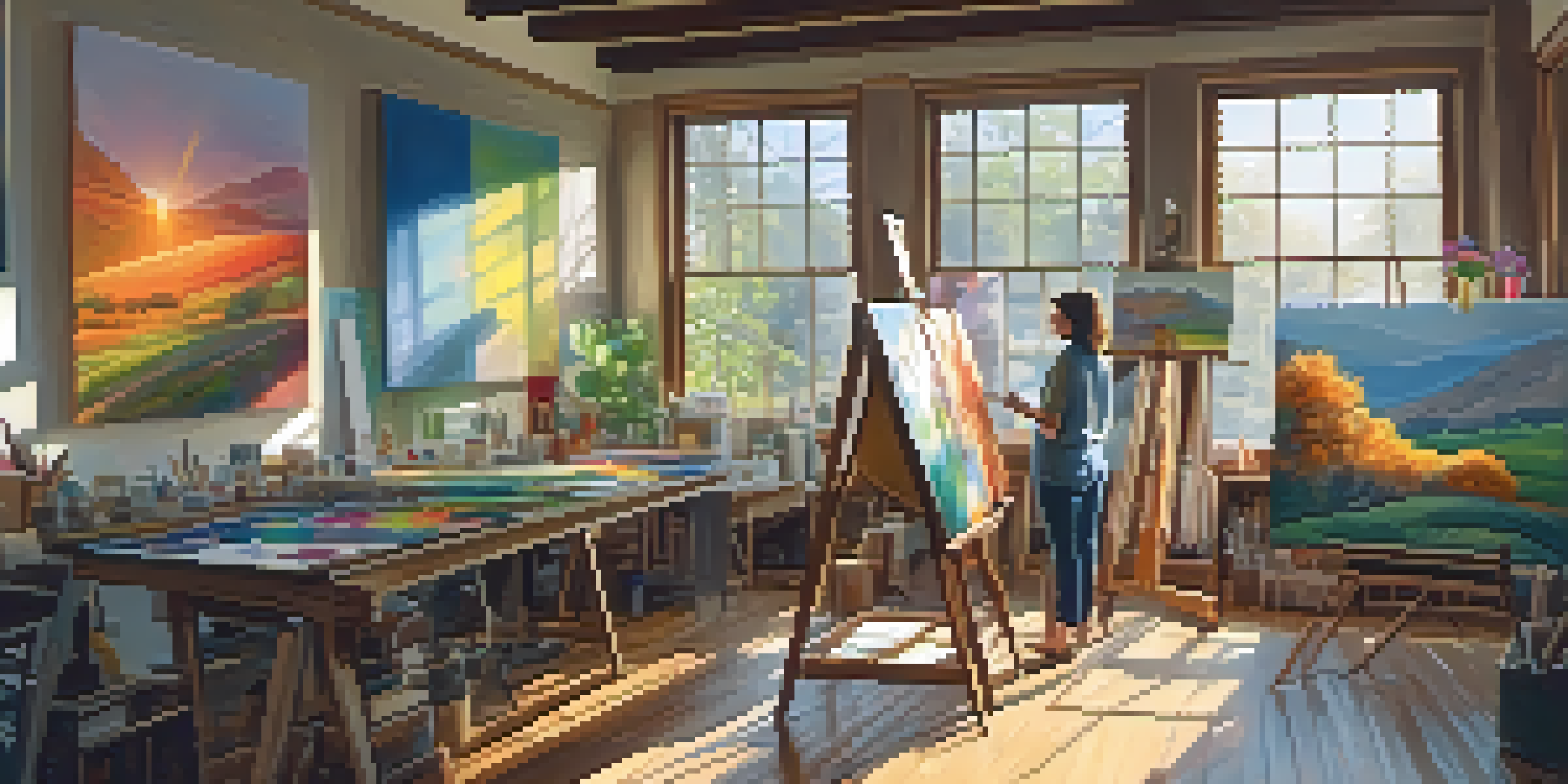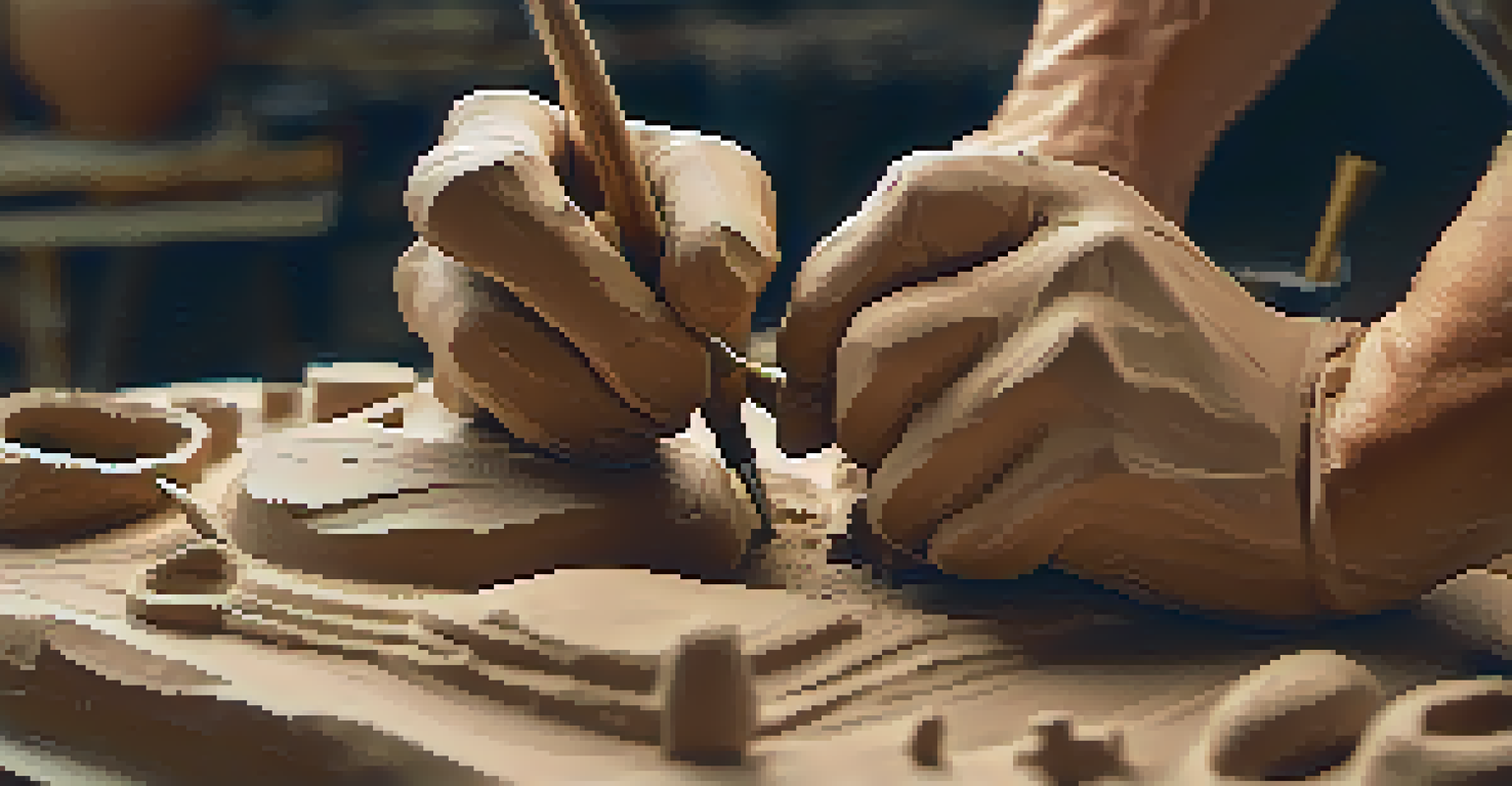Art Critique: Bridging the Gap Between Artist and Audience

Understanding the Purpose of Art Critique
Art critique serves a vital role in the creative ecosystem. It helps artists refine their work and encourages growth through constructive feedback. By discussing strengths and weaknesses, critiques create a dialogue that benefits both the artist and the audience.
Art is not freedom from discipline, but disciplined freedom.
Additionally, art critique can demystify the artistic process, making it more accessible to the public. When audiences understand the intention behind a piece, they are better equipped to appreciate its nuances. This understanding fosters a deeper connection between the artist and their viewers.
Ultimately, critiques can transform passive observers into engaged participants in the art world. They invite audiences to explore their interpretations and emotional responses, bridging the gap between creation and appreciation.
The Role of Subjectivity in Art Critique
One of the fascinating aspects of art is its inherent subjectivity. Each viewer brings their own experiences and emotions to the table, which shapes how they perceive a piece. This subjectivity can be both a challenge and an asset in art critique.

Critics must navigate their own biases while also acknowledging the diverse perspectives of the audience. This balance is crucial for creating a dialogue that respects individual interpretations while offering insights. The goal is to elevate the conversation rather than diminish personal viewpoints.
Art Critique Enhances Artistic Growth
Constructive feedback in art critique helps artists refine their work and fosters their growth.
As critics share their insights, they can encourage audiences to embrace their unique interpretations. This not only enriches the critique but also fosters an inclusive environment where diverse voices are valued.
The Impact of Art Critique on Artists
For artists, critique can be a double-edged sword. On one hand, constructive criticism can propel their work to new heights, pushing them to explore uncharted territories. On the other hand, negative feedback can be daunting and may lead to self-doubt.
Every artist was first an amateur.
Successful artists learn to embrace critique, viewing it as an essential part of their growth. They use feedback to refine their techniques, deepen their concepts, and ultimately enhance their artistic voice. This resilience can transform challenges into opportunities.
Moreover, when artists engage in critique, they often find community and support within the art world. By sharing their experiences, they can inspire others and foster an environment of collaboration and mutual growth.
Bridging the Gap Through Communication
Effective communication is key in bridging the gap between artists and their audience. Critics play a pivotal role in articulating the intentions behind a work, making it easier for viewers to connect on a deeper level. This exchange of ideas enhances the overall appreciation of art.
When critics convey complex concepts in relatable language, they demystify the artistic process for the audience. This approach encourages engagement and invites viewers to explore the emotional and intellectual layers of a piece. It's about creating a shared space for understanding.
Subjectivity Shapes Art Perception
Each viewer's unique experiences influence their interpretation of art, making subjectivity a vital aspect of critique.
Furthermore, this open dialogue can lead to meaningful discussions around cultural and social issues reflected in the artwork. By facilitating these conversations, critiques become a powerful tool for fostering empathy and awareness within the community.
The Importance of Context in Art Critique
Context plays a crucial role in how art is perceived and critiqued. Understanding the historical and cultural background of a piece can significantly enhance its meaning. Critics who provide this context help audiences appreciate the work on multiple levels.
For example, knowing an artist's influences, the socio-political climate during creation, or the materials used can enrich the viewing experience. This depth of understanding fosters a greater connection between the artwork and its audience. It's like uncovering layers of an onion, revealing more with each layer peeled.
Moreover, providing context can help audiences navigate their emotional responses. When they understand the 'why' behind a piece, it can resonate more profoundly, making art a shared experience rather than a solitary one.
Encouraging Diverse Voices in Art Critique
Diversity in critique is essential for a vibrant art community. Different backgrounds and perspectives bring fresh insights that can challenge the status quo and expand the conversation. This inclusivity enriches the critique process and benefits both artists and audiences.
By encouraging diverse voices to participate in art critique, we can address underrepresented narratives and broaden our understanding of art. This creates opportunities for dialogue around issues of identity, culture, and representation, making art more relatable to a wider audience.
Context Deepens Art Appreciation
Understanding the historical and cultural context of a piece enhances the viewer's connection and appreciation for the artwork.
Ultimately, when varied perspectives are celebrated, the art world becomes a more welcoming space. This shift empowers artists to express their unique stories and allows audiences to connect with a broader array of experiences.
The Future of Art Critique and Audience Engagement
As we move forward, the landscape of art critique is evolving. With the rise of digital platforms, audiences have more access to critique than ever before. This democratization of art criticism allows for a multitude of voices to shape the conversation.
Engaging with art online—through social media, blogs, or virtual galleries—has transformed how we experience and critique art. Viewers can share their interpretations and feedback instantly, creating a vibrant dialogue that transcends geographical boundaries. This connectivity fosters a sense of community among art enthusiasts.

Looking ahead, it's essential to embrace this evolution while maintaining the core principles of critique. By fostering respectful and constructive conversations, we can ensure that art remains a powerful medium for connection and understanding in an increasingly complex world.